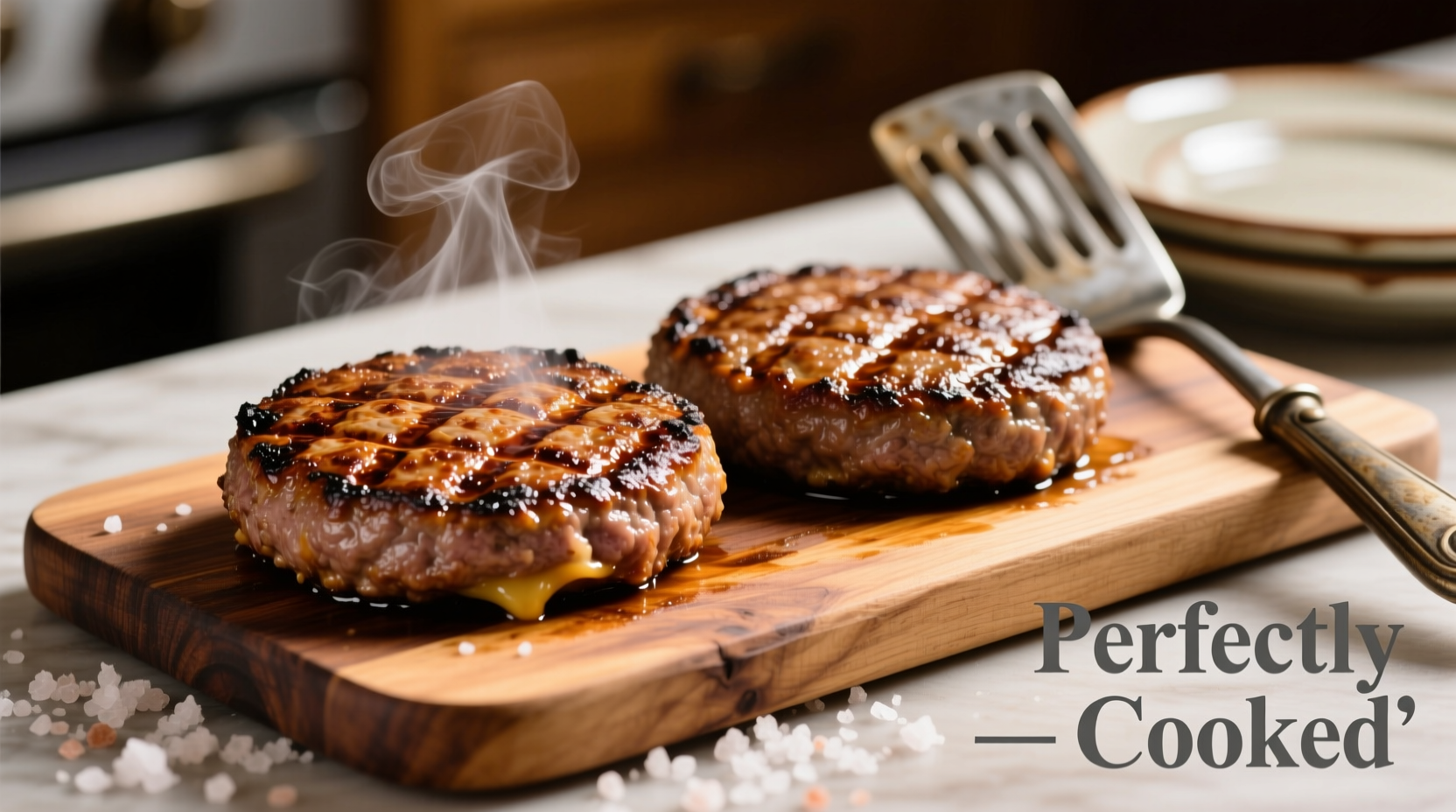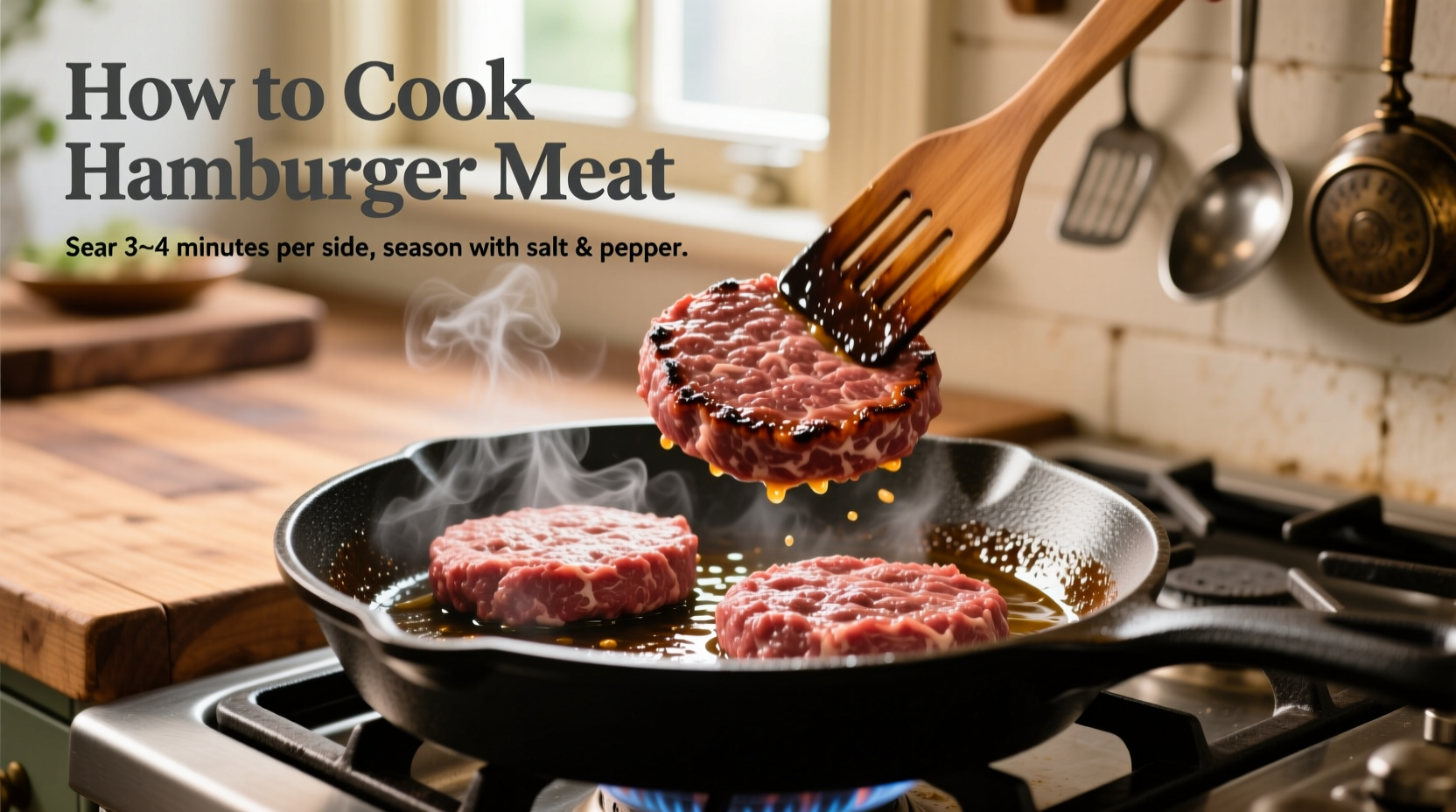Perfectly cooked hamburger meat reaches a safe internal temperature of 160°F (71°C), has a juicy texture, and develops a flavorful crust. This guide delivers professional techniques for selecting, seasoning, and cooking hamburger meat using multiple methods while ensuring food safety and maximum flavor.
Why Proper Hamburger Meat Cooking Matters
Millions of foodborne illness cases each year stem from improperly cooked ground beef. According to the USDA Food Safety and Inspection Service, 160°F (71°C) is the minimum safe internal temperature that destroys harmful bacteria like E. coli and Salmonella in hamburger meat. Unlike whole cuts of meat, ground beef mixes surface bacteria throughout the product, making proper cooking essential.
Selecting the Best Hamburger Meat
Your burger's success starts at the grocery store. Look for these quality indicators:
- Fat content: 15-20% fat ratio provides optimal juiciness (80/20 lean-to-fat)
- Freshness: Bright red color with no gray spots or unpleasant odors
- Grind quality: Freshly ground meat has better texture than pre-packaged patties
- Source: Grass-fed beef offers different flavor profiles but requires careful temperature monitoring
| Cooking Method | Optimal Temperature | Cooking Time (1/2" patty) | Best For |
|---|---|---|---|
| Cast Iron Skillet | Medium-high heat | 3-4 minutes per side | Maximum crust development |
| Gas Grill | 400-450°F | 4-5 minutes per side | Outdoor cooking, smoky flavor |
| Oven Broiler | High setting | 5-6 minutes per side | Indoor cooking, minimal cleanup |
| Smoker | 225-250°F | 25-30 minutes | Low-and-slow cooking, complex flavors |
Step-by-Step Pan Cooking Method
For most home cooks, the cast iron skillet provides the most reliable results. Follow these professional techniques:
Preparation Phase
- Chill your meat patties for 30 minutes before cooking to maintain shape
- Create a slight dimple in the center of each patty to prevent bulging
- Season generously with coarse salt and freshly ground pepper just before cooking
- Preheat your skillet for 5 minutes until water droplets sizzle and evaporate immediately
Cooking Process
- Place patties in hot skillet without overcrowding
- Resist pressing down with a spatula (this squeezes out precious juices)
- Cook undisturbed for 3-4 minutes to develop proper crust
- Flip once using a thin, wide spatula for clean transfer
- Cook second side for 3-4 minutes or until internal temperature reaches 160°F
- Transfer to a resting plate and tent loosely with foil for 5 minutes

Food Safety Timeline You Must Know
Understanding the critical temperature timeline prevents both undercooking and overcooking:
- 40-140°F (4-60°C): Danger zone where bacteria multiply rapidly (USDA)
- 145°F (63°C): Medium-rare for whole cuts, but unsafe for ground beef
- 160°F (71°C): Minimum safe temperature for ground beef (USDA FSIS)
- 170°F+ (77°C+): Starts becoming dry and crumbly
A digital instant-read thermometer is the only reliable way to verify doneness. Visual cues like color changes can be misleading, especially with certain beef varieties or added ingredients.
Common Mistakes That Ruin Hamburger Meat
Avoid these professional kitchen pitfalls:
- Over-handling: Mix ingredients gently to prevent tough burgers
- Seasoning too early: Salt draws out moisture if applied more than 30 minutes before cooking
- Flipping too often: Prevents proper crust formation (flip only once)
- Cooking from refrigerator-cold: Leads to uneven cooking (bring to cool room temperature first)
- Skipping the rest period: Juices redistribute during the 5-minute rest
Advanced Flavor Techniques
Elevate your hamburger meat with these chef-approved methods:
- Compound butter: Place herb-infused butter on patties during the last minute of cooking
- Dry brine: Sprinkle salt on patties 45 minutes before cooking for deeper seasoning
- Smoke infusion: Add wood chips to charcoal grills or use liquid smoke sparingly indoors
- Temperature stacking: Finish cooking in a 350°F oven after searing for thicker patties
When to Use Different Cooking Methods
Your cooking method should match your specific situation:
- Rainy day? Cast iron skillet provides consistent indoor results
- Large gathering? Grill allows cooking multiple patties simultaneously
- Hot summer day? Avoid heating up your kitchen with outdoor methods
- Texture preference? Cast iron creates superior crust compared to grill
- Dietary restrictions? Baking provides more precise fat drainage
Essential Troubleshooting Guide
Solve common hamburger meat problems with these fixes:
- Sticking to the pan: Ensure proper preheating and adequate oil
- Uneven cooking: Create uniform thickness with a burger press
- Excessive flare-ups: Move patties to cooler part of grill temporarily
- Dry texture: Increase fat content or add moisture-retaining ingredients
- Shrinking patties: Make them slightly larger than your bun with a center dimple
Serving Your Perfectly Cooked Hamburger Meat
Maximize your results with proper serving techniques:
- Toast buns on the grill or in the skillet during the last minute of cooking
- Place cheese on patties during the final minute for perfect melting
- Build burgers bottom-up: bun, sauce, patty, toppings, top bun
- Serve immediately while hot for optimal texture and flavor
- Pair with complementary sides that don't compete with burger flavors











 浙公网安备
33010002000092号
浙公网安备
33010002000092号 浙B2-20120091-4
浙B2-20120091-4